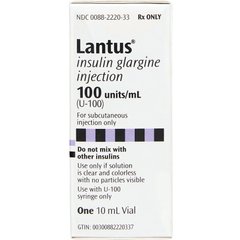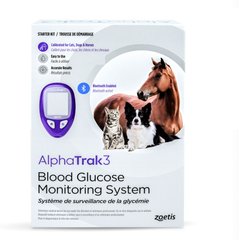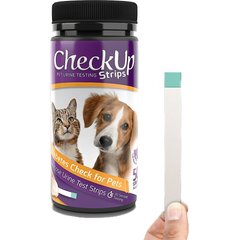Diabetes in Cats: Signs, Treatment, and Prognosis
matucha/iStock / Getty Images Plus via Getty Images
Diabetes mellitus (commonly referred to as diabetes) is a disease of the endocrine system in which the body either doesn't produce enough insulin or can't use the insulin it does produce.
You may be surprised to find out that cats can have diabetes, too.
Key Takeaways
- Diabetes in cats is a common condition—it’s estimated that one in 100 cats will develop diabetes.
- Contact your veterinarian immediately if you believe that your cat may be experiencing diabetes symptoms.
- Treatment of diabetes in cats is a lifelong commitment and necessitates dedication from all family members.
What Is Diabetes in Cats?
Diabetes in cats is a very common condition. In fact, it’s estimated that one in 100 cats will develop diabetes in their lifetime. Diabetes is also much more prevalent in cats that weigh more than 9 pounds, which directly links this condition to overweight cats.
Let’s look at everything a pet parent should know about diabetes in cats, from signs of diabetes in cats to cat diabetes treatment.
Types of Diabetes in Cats
Like people, there are different types of diabetes in cats. These include:
-
Type I—Type I diabetes mellitus is also called insulin-deficient diabetes.
-
This type of diabetes, where the pancreas is unable to produce the level of insulin that the body needs, is rarely seen in cats.
-
-
Type II—Type II diabetes mellitus is also called insulin-resistant or non-insulin-dependent diabetes. This is the most common form of diabetes mellitus in cats.
-
Type II diabetes is characterized by a relative insulin deficiency. This means that even though the cat’s pancreas may produce adequate levels of insulin, the tissues are unable to use it for glucose metabolism.
-
Signs of Diabetes in Cats
It’s important for pet parents to understand the symptoms of diabetes in cats, and to contact your veterinarian immediately if you believe that your cat may be experiencing any of them.
Common signs of diabetes in cats include:
-
Increased thirst (polydipsia, PD)
-
Increase in frequency and volume of urination (polyuria, PU)
-
PU/PD is often the first sign pet parents notice in a cat with diabetes.
-
Filling up the water bowl more often and having to clean urine out of the litterbox more frequently are common indications that your cat might have diabetes.
-
-
Urinating outside the litter box
-
Along with PU/PD, cats often have urinary accidents outside of the box with untreated or unregulated diabetes.
-
They have an urgency to go due to the increased thirst and high blood sugar levels, which often leads them to go outside instead of inside the litter box.
-
-
Increased appetite initially, then decreased appetite: Up to 50% of cats with diabetes have a decreased appetite at the time of diagnosis.
-
Weight loss (despite a nutritious diet and healthy appetite)
-
Muscle wasting
-
Behavioral changes: Cats with undiagnosed or unregulated diabetes are often irritable or even uncharacteristically aggressive.
-
This is often the result of them not feeling like themselves as their blood sugar fluctuates. A once-energetic and playful cat will become lethargic and disinterested over a short period of time when they are dealing with undiagnosed diabetes.
-
-
Plantigrade stance: In cases of uncontrolled diabetes in cats, pets may develop damage to the nerves in their hind limbs.
-
Instead of walking on their paw pads, they will walk with their whole foot almost or completely touching the ground (called a dropped hock).
-
-
Diabetic ketoacidosis (DKA)—DKA is a dangerous medical emergency that occurs when a cat goes a prolonged period with high blood sugar. As a result, they start to develop ketoacids in the bloodstream.
-
This can happen because of undiagnosed diabetes for a significant amount of time, concurrent disease such as pancreatitis, or when a cat's insulin treatment is no longer sufficient and a dose change is needed.
-
If not treated swiftly, DKA is fatal.
-
Several of the symptoms of diabetes in cats are not specific to diabetes alone. Take your cat to your veterinarian to rule out other diseases (such as kidney disease, hyperthyroidism, or pancreatitis).
Cat Diabetes Risk Factors
It’s estimated that between 0.5-1% of the general feline population suffers from diabetes, but an increasing number of cats are being diagnosed each year.
Any cat has the potential to develop diabetes throughout their lifetime, but certain breeds—such as the Burmese cat breed—have been reported to carry a higher lifetime risk.
Most commonly, diabetes is seen in middle-aged male cats that are obese.
The most important risk factors for diabetes mellitus in cats are:
-
Obesity
-
Lack of physical activity
-
Increasing age
-
Sex (males are diagnosed more frequently than females)
-
Glucocorticoid (steroid) therapy
Certain medical conditions may also predispose a cat to developing diabetes. These conditions include:
-
Hyperthyroidism
-
Pancreatitis
-
Asthma (due to steroid medication use)
Diagnosing Diabetes in Cats
Diabetes in cats is diagnosed by a combination of typical clinical signs reported by pet parents in addition to elevated glucose levels in cat's blood and the urine.
This can be diagnosed by performing full blood work and a urinalysis.
Your veterinarian may also use the blood sample to perform a serum fructosamine. This allows your vet to see if your cat’s blood glucose has been elevated over time, and not just at the time it was measured in the hospital.
Cat Diabetes Treatment
Unfortunately, there is no cure for diabetes in cats. Treatment of diabetes in cats is a lifelong commitment and necessitates dedication from all family members. It also requires consistent, open communication with your veterinarian.
At the time of diagnosis, your cat may need to be hospitalized for several days until their glucose level is controlled and they are feeling well enough to go home with you.
If your cat is in a state of diabetic ketoacidosis at the time of diagnosis, they will likely require extended hospital stays and intensive care.
The primary goals of treatment of feline diabetes are centered on:
-
Restoring normal blood glucose levels
-
Reducing or eliminating the clinical signs of excess thirst and urination
-
Normalizing weight and appetite
-
Avoiding inducing inappropriately low glucose levels
Your veterinarian will develop a plan that is tailored to your cat’s specific needs. If your cat has concurrent diseases, your veterinarian will recommend treatment for those as well.
Once your vet makes a diagnosis of diabetes, there are a few medical and lifestyle changes that you and your cat will need to make.
The first step is starting insulin.
Insulin is given by injection and will help your cat maintain normal blood sugar levels.
Your vet will also start your cat on a diabetic-friendly diet to help prevent blood sugar changes. Being on a prescription diet for feline diabetes can help to decrease the amount of insulin your cat needs.
Wet food diets are preferred as these diets are lower in carbohydrates (sugar) and higher in protein.
However, your vet may say it’s OK to give a mixture of wet and dry food, depending on your cat’s preference.
Diabetes is also treated by ensuring your cat remains at a lean body weight. Portion control with feeding and increased exercise can also be helpful.
How Much Does Cat Diabetes Treatment Cost?
The cost of treatment for diabetes in cats varies depending on a few factors.
-
The initial cost to get your cat on the right insulin dose and diet is much more than the maintenance.
-
Vet visits to check insulin levels are needed routinely and when a cat isn't feeling well.
-
The cost of treatment involves vet visits, lab work, insulin, syringes, and a special diet.
-
Insulin vials cost anywhere from $25–$100 depending on the amount and the brand/formulation. Each vial is usually good for one month.
-
A vet visit can cost $30–$120 depending on location. Blood and urine testing is likely another $50–$100.
-
Prescription diabetic cat food can cost upwards of $60 for a case of canned food. A small bag of dry food typically starts around $25.
Diabetes in Cats Prognosis
Cats with diabetes can live long, healthy lives if treated promptly and properly. Cats that develop DKA or those that have their kidney enzymes affected usually have a worse prognosis. In some cases, diabetic cats may even go into remission.
If your cat was diagnosed with other illnesses, this might complicate the regulation of your cat’s diabetes and/or affect your cat’s long-term prognosis.
Cats with diabetes that do not undergo treatment will succumb to the disease. Dangerously high blood sugar for sustained periods of time will cause suffering and are ultimately fatal.
Caring for a Diabetic Cat at Home
When caring for your diabetic cat, you will need to consistently perform few tasks to help manage your pet’s condition.
Monitoring Your Cat’s Glucose Levels
At-home monitoring of your cat’s blood glucose levels is important for monitoring your cat’s glycemic control long-term. This typically involves pricking the inside of your cat’s ear and using a glucometer (AlphaTRAK®).
Glucose levels can also be monitored in a less invasive manner—by measuring glucose levels in the urine—although this method is not as accurate as blood measurements.
Not all cats are amenable to blood glucose monitoring at home.
Your veterinarian will work with you to determine the method of monitoring that works best for you and your cat.
Monitoring Your Cat’s Insulin Response
One of the most serious risks and potential complication of managing a diabetic cat at home is the risk of hypoglycemia (low blood sugar).
This can happen to any pet being managed for diabetes at home, even if you give them the appropriate dose (or less than the appropriate dose) prescribed by the veterinarian.
For this reason, it’s important that you strictly follow your veterinarian’s instructions and schedule for feeding and giving insulin, and that you never administer a full dose of insulin to your pet if they are not eating.
Managing Your Cat’s Diet and Weight
Nutrition is an important part of managing diabetes in cats. Your veterinarian may recommend a diet change to help regulate your cat’s glucose levels and promote weight loss, as obesity complicates diabetes management. Once you have identified a nutritional plan that works for your cat, it’s critical that you maintain a strict feeding schedule.
Don’t change your cat’s diet without consulting your veterinarian first.
Providing Appropriate Exercise
Keeping your cat physically active is another important component of helping your cat achieve a healthy weight.
Keeping a Daily Log of Your Cat’s Health
Keep a daily log of your cat's:
-
Diet
-
Glucose test results
-
Daily insulin dose
-
Weekly body weight
You can see trends and recognize when your cat deviates from their regular pattern. Any change in patterns should be brought to your vet’s attention.










